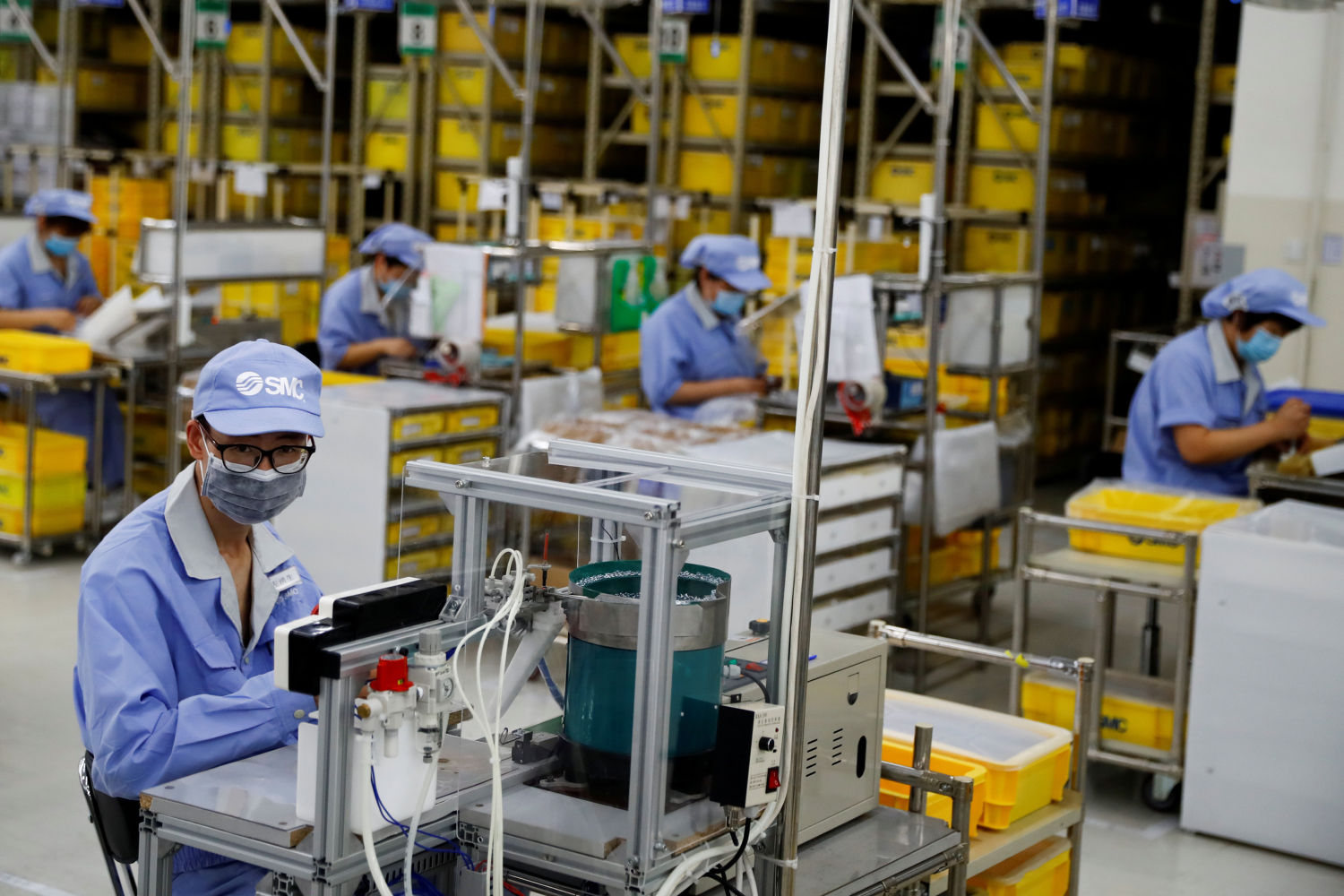(ATF) China’s industrial output rose 7% in November from a year ago, notching an expanding for the eighth consecutive month as robust exports continued to drive a world-beating economic recovery from the coronavirus pandemic that crippled the world’s second-largest economy earlier this year.
The growth follows a 6.9% increase in October. “Generally speaking, the national economy sustained a steady recovery in November,” the National Bureau of Statistics (NBS) said in a statement accompanying the data, adding that progress had been made in ensuring stability in employment.
“However, we should be aware that given the resurgence of the [Covid-19 pandemic], the world economic recovery is facing headwinds with increasing instabilities and uncertainties,” NBS added. “The domestic economic recovery is confronted with interlacing old and new issues as well as structural problems which have imposed challenges to promote the continuous economic recovery.”
Foreign analysts were mostly upbeat. “China’s economy continued to accelerate across all fronts in November,” says Julian Evans-Pritchard, senior China economist. at Capital Economics. “We expect output to remain above-trend in the coming quarters, even as tailwinds from stimulus and exports start to ease.”
One driver was stronger foreign demand, says Evans-Pritchard. “Growth in industrial exports sales picked up to a two-year high in November,” he notes, adding that the strong rebound in investment and exports has continued to support jobs growth. The surveyed unemployment rate edged down from 5.3% to 5.2% last month and is now back to pre-virus levels.”
Foreign demand for Chinese goods is expected to drop back as vaccines start to reverse the recent shift in global consumption patterns. But while the strong rise in export growth was driven by the continued improvement in non-Covid-related exports, masks, medical instruments, and other Covid-related exports rebounded as the US and Europe faced a new wave of infections.
Taming coronavirus
China, meanwhile reported just 17 new cases of coronavirus on December 14, up from 16 cases a day earlier, the National Health Commission said. Of those, 14 were imported infections originating from overseas.
The output data showed improvements across the board. Steel product production grew 10.8% year-on-year in November, while electricity output increased 6.8%. Automobile sales growth remained strong at 11.8% and fixed investment growth was solid at 9.4%. Among major basic materials, only cement production decelerated, dipping 7.7%.
However, property investment and new home sales both weakened in November. Property investment growth dropped slightly to 10.9% year on year in November from 12.7% in October. Also, growth of new home sales in volume and value terms both weakened in November, by falling to 12.0% year on year and 18.6% respectively from 15.3% and 23.9% in October.
Although growth of land sales in volume terms dropped further to minus 15.6% in November from 5.6% in October, in value terms it rose slightly to 22.8% from 19.3% over the same period, thanks to higher land prices. “We believe land sales growth could weaken in coming months as implied by some leading indicators, as developers may have adjusted their land purchase plans to cope with Beijing’s tightening measures on developer financing,” said Ting Lu, chief China economist at Nomura.
Domestic consumption
China’s retail sales increased 5% last month from a year earlier, just missing analysts’ forecast for 5.2% growth and faster than the 4.3% gain in October. Total retail sales of consumer goods rose to 3,951 trillion yuan at a pace 0.7 percentage points faster compared with that in October.
Last month’s retail sales growth, which was supported by Singles Day, the world’s biggest shopping festival, comes after concerns that consumption was lagging behind a wider recovery.
Fixed asset investment increased 2.6% in the first 11 months of the year from the same period in 2019, in line with forecasts and faster than the 1.8% growth recorded in the first 10 months of the year.
NBS said China could make targeted policy adjustments as the economy improves. Fu Linghui, the bureau’s spokesman, told a briefing in Beijing after the latest data was released. He said due to the low base this year because of the pandemic, growth may stage a rapid rebound next year.
Not all forecasts were optimistic however. “We are not particularly optimistic on the Chinese economy in 2021 though the trade relationship with the US could improve but that may not happen immediately after Joe Biden will be in office,” says Iris Pang, chief China economist at ING. “We continue to see the technology war as the biggest risk for China in 2021, along with the risk of credit defaults continuing.”
ALSO SEE:
























